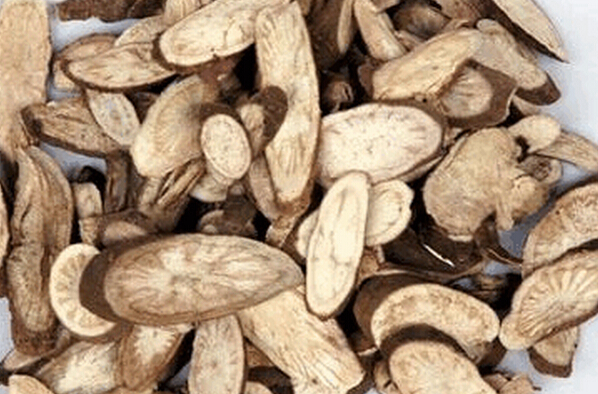Also known as Radix Paeoniae Rubra in Latin, in TCM's opinion it refers to the dried root of Paeonia lactiflora Pall. or Paeonia veitchii Lynch. This herb is produced in most parts of China. Usually the medicinal roots are harvested in spring and autumn. The processes involved are removing fibrous roots and dirt, drying in the sun, and slicing. Usually it is used in both crude and fried forms.
WHAT IS RED PEONY USED FOR?
TCM considers this herb bitter and slightly cool in nature. It covers liver channel. In TCM practices, its basic functions are to remove pathogenic heat from blood and invigorate blood to Remove blood stasis. Its most important uses and indications are measles in epidemic heat syndrome, Hematemesis, nosebleed, discharging fresh blood stool, sore red swollen eyes, swelling, abscesses and boils, Amenorrhea, Dysmenorrhea, morbid vaginal discharge, flank pain due to stagnation, hernia syndrome, and injuries from falls, fractures, contusions and strains. Usual dosage is from 6 to 12 grams, generally in decoction.

Red Peony Root
CHEMICAL COMPOSITION
Red peony bulbs contains paeoniflorin, oxy-paeoniflorin, benzoylpaooniflorin, albi-florin, paeoniflorigenone, galloylpaeoniflorin, z-1s, 5R-β-pinen-10-yl-β-vicianoside, lacioflorinm, paeoni-lactone A, B, C, β-siiosierol, and daucos-terol. And also the isolated matter from the root tannins are 1,2,3,6-tetra-O-galloyl-β-D-glucose, 1,2,3,4,6-penta-O-galloyl-β-D-glucose, and the corresponding 6 gallic acid glucose and 7 galloyl glucose. What’s more, it contains also catechin and volatile oil, which mainly include benzoic acid, Paeonol, and total 33 types of other alcohols and phenolic compounds.
MAIN CHINESE HERBAL FORMULAS INCLUDING RED PEONY
1) Chi Shao Yao San
This formula, from Tai ping sheng hui fang (Taiping Holy Prescriptions for Universal Relief), is basically used in treatment of dysentery accompanied with unbearable abdominal pain. Other herb is Huang Bai (Phellodendron).
2) Shao Yao Tang
This prescription, from Sheng Ji Zong Lu (Complete Record of Holy Benevolence), is exclusively designed for dysentery with bloody stool combined with abdominal pain. The other two herbal ingredients are Huang Bai and Di Yu (Bloodwort Root).
3) Ru Shen Tang
Ru Sheng Tang is from Tai ping sheng hui fang. This formula is primarily for profuse uterine bleeding and leukorrhea with reddish discharge. Other herb includes Xiang Fu (Nut Grass Rhizome).

![Diseases, Symptoms, tcm, [tcmwindow.com]](/uploadFile/adImg/2015/11/11/f5cbfcc0-4df5-4646-9b9a-f316651a0199.jpg)





